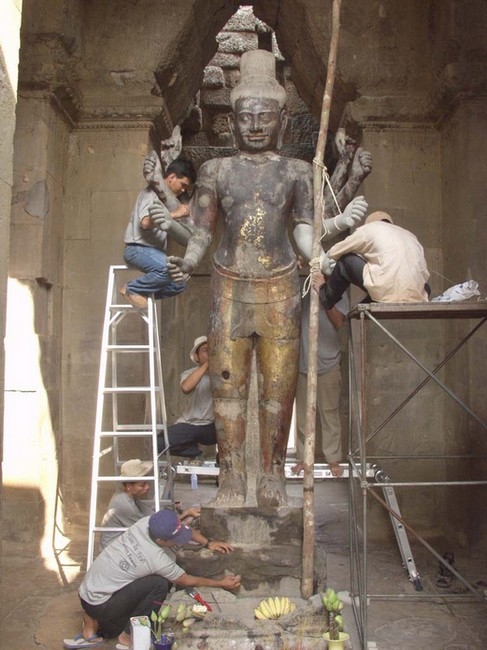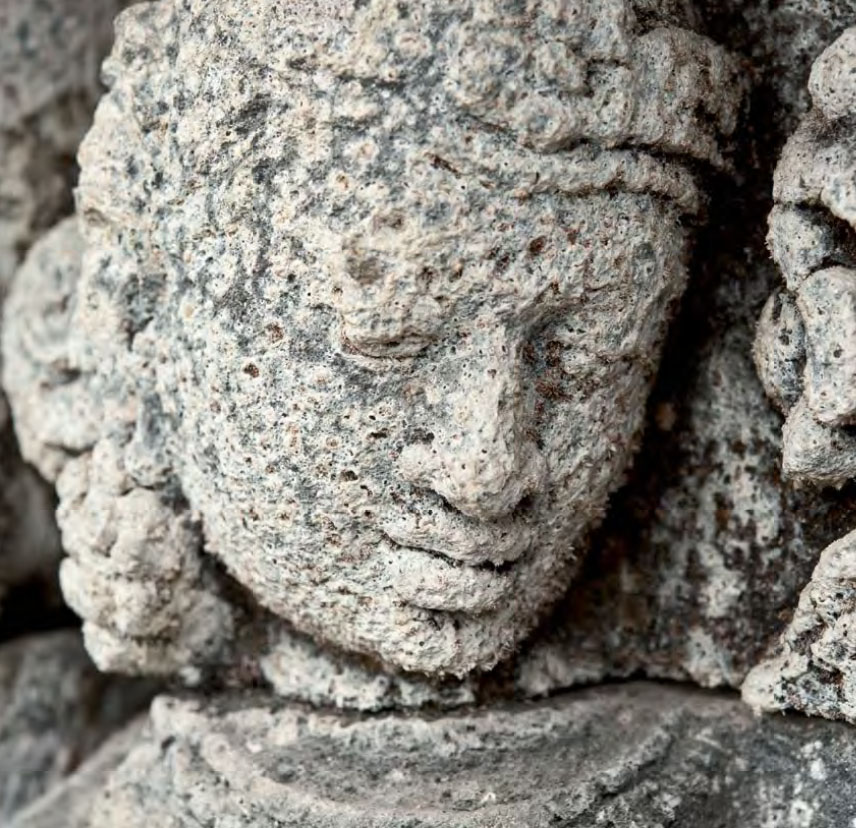In south-east Asia, amidst the jungles of Cambodia, lie some of the most impressive cultural sites in the world. The temple complex Angkor, which has been in the UNESCO World Heritage List since 1992, captivates visitors with its majestic dimensions and wide variety of art forms.
From the 9th till the 14th century, Cambodia was the heart of high Khmer culture. The largest and most important temple in the area is Angkor Wat. Its surfaces are decorated with unique stone sculptures, including almost 1850 divinities (known locally as „apsaras“), bas-reliefs up to 100m long in the galleries and richly-decorated tympanums which look as though they have been carved from wood. These latter, however, are in a worrying condition; many have already fallen victim to the weather.

Since 1995 a team from Cologne University of Applied Sciences has been working to prevent further decay. The restoration and conservation measures are being carried out by lecturers and students from the Institute of Restoration and Conservation Science in cooperation with a team of Cambodian conservators. The project also receives support from external scientists in the fields of geology, geomicrobiology and chemistry.
Every natural stone has its own characteristic properties; each one reacts differently to the effects of the weather. Since 1995, therefore, the sandstone blocks used to build Angkor and the damage already caused have been the subject of detailed investigation so that decisions can be taken on the most suitable conservation methods. Every situation, every temple, is considered individually, and all steps in the process must be documented in detail.
A thorough survey revealed that about 300 apsaras and a large number of reliefs on the pediments of Angkor Wat were so badly damaged that large pieces of stone could fall off at any time. Since 1998 the weather-beaten reliefs have been undergoing painstaking conservation. However, it will not be possible to prevent further damage completely. Continual monitoring and maintenance will be needed.

The German Apsara Conservation Project (GACP) began in 2003 with an examination of further temples in Angkor Park, including the early brick temples with their amazing stucco decorations. On the basis of the findings, conservation measures were successfully carried out. In 2006 work extended also to Koh Ker temple, north-east of Angkor. In 2008 work began on the derelict remains of Preah Khan Kampong Svay.
If the work is to be successful, the workers must undergo constant training. As part of the project, the GACP trained the Cambodian conservators. Students from Cologne University of Applied Sciences and other universities can help with project work during their practical semester or help with dissertations. Playing a part in a major scientific research project on a UNESCO World Heritage site is a unique opportunity for the students.
Project: Prof. Dr. Hans Leisen, Project Director, Cologne University of Applied Sciences
Promoted by: Cultural Preservation Programme of The Federal Foreign Office


